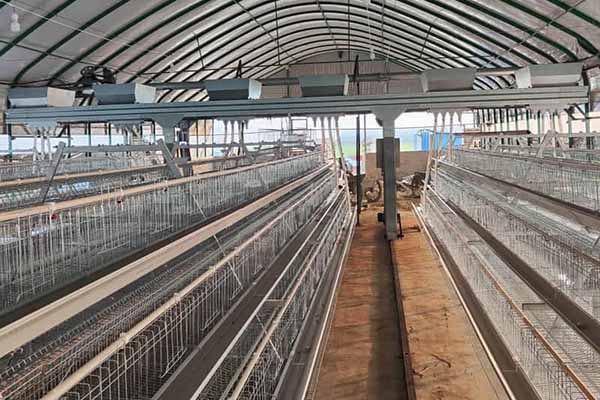Optimizing Chicken Layer Cage Size for Enhanced Production
Time : 2025-06-29
Layer cages are an essential piece of equipment in modern poultry farming, providing a controlled environment for chickens to lay eggs efficiently. The size of the layer cage directly impacts the productivity and health of the chickens. In this article, we will discuss the factors to consider when determining the ideal layer cage size, focusing on the science and best practices involved in chicken farming equipment.
Introduction to Layer Cages
Layer cages are designed to accommodate hens during the laying period, ensuring they have ample space for movement, nesting, and resting. Properly designed cages enhance egg production, minimize stress on the chickens, and facilitate easier management and health monitoring.
Factors to Consider in Layer Cage Size
When selecting the layer cage size, several factors should be taken into account to ensure the optimal conditions for the chickens.
1. Chicken Breed and Age
Different chicken breeds have varying sizes and growth rates. The cage size should accommodate the size of the chicken breed and the age at which they will be housed. Younger chickens need more space for growth, while older birds may require a larger cage to prevent foot conditions and other age-related issues.
2. Egg Production Goals
Higher-density cages may be suitable for maximizing egg production, but they can increase the risk of stress, aggression, and injury among chickens. To strike a balance between production and animal welfare, a moderate cage density should be chosen based on your specific production goals.
3. Caging Material and Structure
The material and structure of the layer cage also influence the size requirements. For instance, wire cages generally require a larger floor space per bird to prevent discomfort and injury. On the other hand, solid-sided cages may need to be slightly smaller due to less material used in construction.
Standard Layer Cage Sizes
To provide a starting point, the following are standard layer cage sizes based on chicken breed and production goals:
2.0 ft² per bird
This size is suitable for young birds or lower-density cage systems.
3.0 ft² per bird
This size is a good compromise between density and animal welfare, often used for moderate production goals.
4.0 ft² per bird
For high-density systems or breeds requiring more space, a 4.0 ft² per bird size can be a better choice.
Calculating Layer Cage Size
To calculate the optimal layer cage size for your farm, follow these steps:
Step 1: Determine the chicken breed and age.
This information will help you understand the size requirements for the birds you are raising.
Step 2: Decide on your egg production goals.
This will help you determine the cage density that suits your needs.
Step 3: Calculate the required floor area per bird.
Based on the breed and production goals, choose the appropriate standard layer cage size from the previous section.
Step 4: Account for the number of birds.
Divide the total area of the available space by the floor area per bird to calculate the maximum number of birds that can be housed in the space.
Advantages of Proper Layer Cage Size
Properly sizing layer cages offers numerous benefits for both the chickens and the farmer:
1. Improved Egg Quality
Larger cages can help ensure that the chickens are comfortable, which may result in higher egg quality.
2. Reduced Aggression
Proper cage size reduces the stress that can lead to aggression among hens.
3. Enhanced Chicken Welfare
By providing an appropriate cage size, you can improve the overall welfare of your chickens, leading to lower mortality rates and better health outcomes.
4. Increased Egg Production
The right layer cage size can optimize production, leading to higher yields for your farm.
Conclusion
Determining the ideal layer cage size is crucial for successful chicken farming. By considering the chicken breed, age, production goals, and the material and structure of the cage, you can create a comfortable, productive, and humane environment for your hens. By optimizing the layer cage size, you can enjoy the advantages of higher egg quality, reduced aggression, and increased egg production, ensuring a prosperous and sustainable poultry farm.












